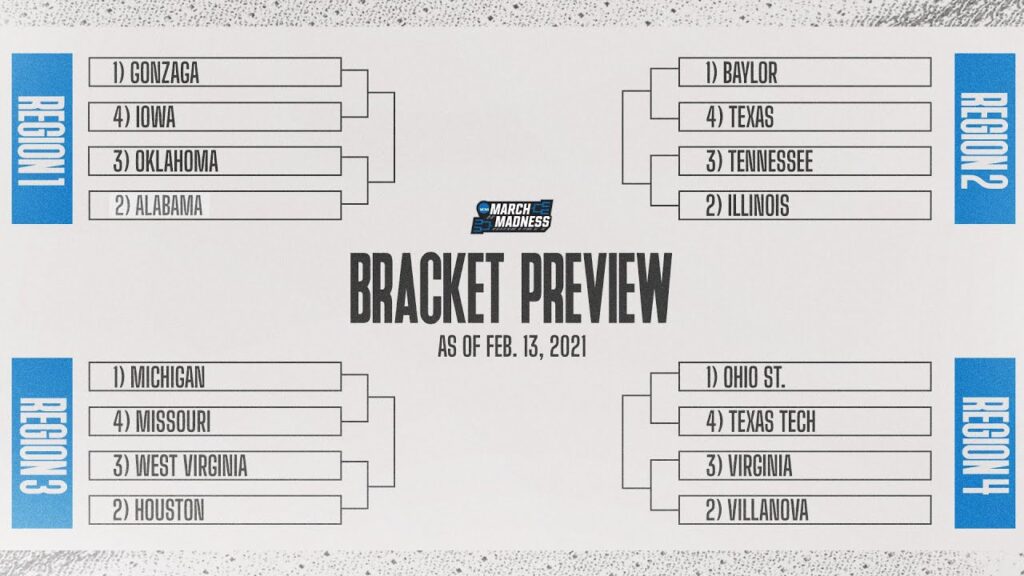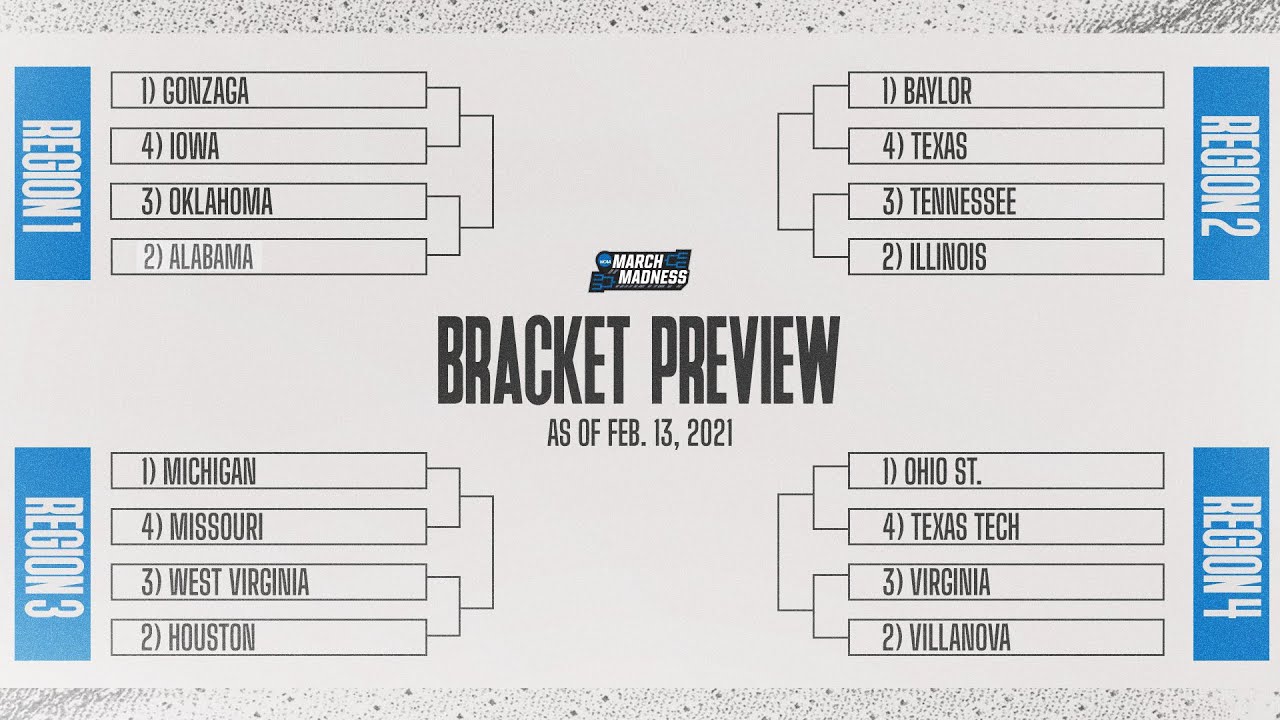
Decoding March Madness: How Do March Madness Seeds Work?
March Madness, the annual NCAA Division I Men’s Basketball Tournament, is a thrilling spectacle of upsets, buzzer-beaters, and bracket-busting moments. At the heart of this organized chaos lies a system of seeding, a crucial element that determines the initial matchups and, to some extent, the path to the championship. Understanding how do March Madness seeds work is essential for anyone looking to fully appreciate the tournament’s dynamics and make informed bracket predictions.
The Selection Process: From Conference Champs to At-Large Bids
Before delving into the intricacies of seeding, it’s important to understand how teams qualify for the tournament. The field of 68 teams is comprised of automatic qualifiers and at-large selections. Automatic bids are awarded to the winners of each of the 32 Division I conferences. These teams, regardless of their overall record or perceived strength, earn a guaranteed spot in the tournament.
The remaining 36 spots are filled by at-large bids. These teams are selected by the NCAA Division I Men’s Basketball Committee, a group of athletic directors and conference commissioners. The committee evaluates teams based on a variety of factors, including:
- Record: Overall win-loss record is a primary consideration.
- Strength of Schedule: The quality of opponents played is a significant factor. Teams that play a tougher schedule are generally viewed more favorably.
- Quality Wins: Victories against highly-ranked opponents are highly valued.
- RPI/NET Rankings: The Rating Percentage Index (RPI) was traditionally used, but now the NCAA uses the NET (NCAA Evaluation Tool) ranking system, which considers game results, strength of schedule, game location, scoring efficiency, and net efficiency.
- Conference Performance: How a team performed within its conference, including regular season and tournament results, is taken into account.
- Eye Test: While data-driven metrics are important, the committee also uses subjective judgment to assess teams.
The selection process is often debated, with fans and analysts questioning the committee’s decisions. However, the goal is to select the 36 best at-large teams, creating a competitive and compelling tournament field. Understanding how do March Madness seeds work starts with understanding who gets in.
Understanding the Seeding Process: Ranking the Teams
Once the 68 teams are selected, the committee then ranks them from 1 to 68. This ranking is then used to assign seeds within each of the four regions (East, West, South, and Midwest). Each region has teams seeded from 1 to 16. The highest-ranked team in the tournament is given the overall #1 seed and placed as the #1 seed in one of the regions. The next three highest-ranked teams are then assigned as the #1 seeds in the remaining three regions. This process continues until all 68 teams have been seeded.
The seeding process aims to create balanced regions, with the highest-ranked teams generally placed in positions that give them the best chance to advance to the later rounds. However, upsets are a common occurrence in March Madness, and lower-seeded teams often defeat higher-seeded teams, adding to the tournament’s unpredictability.
How Do March Madness Seeds Work in Practice?
In the first round, the matchups are typically as follows:
- #1 seed vs. #16 seed
- #2 seed vs. #15 seed
- #3 seed vs. #14 seed
- #4 seed vs. #13 seed
- #5 seed vs. #12 seed
- #6 seed vs. #11 seed
- #7 seed vs. #10 seed
- #8 seed vs. #9 seed
The winners of these games advance to the second round, where they face off against the winners of other first-round matchups. The tournament continues in a single-elimination format until the Final Four, where the winners of each region compete for the national championship. Understanding how do March Madness seeds work is critical for bracketology.
The Importance of Seeding: Advantage or Illusion?
Higher seeds are generally favored to win their games, especially in the early rounds. This is due to the fact that the seeding process is designed to reward teams that have performed well throughout the season. However, seeding is not a guarantee of success, and upsets are a hallmark of March Madness. The tournament is known for its Cinderella stories, where lower-seeded teams make improbable runs to the Sweet Sixteen, Elite Eight, or even the Final Four.
While a higher seed provides a theoretical advantage, factors such as team chemistry, coaching strategy, and individual player performance can often outweigh the perceived advantage of a higher seed. A team’s ability to handle pressure, execute its game plan, and capitalize on opportunities can be just as important as its seeding. Considering how do March Madness seeds work, it’s clear that the human element plays a huge role.
Common Misconceptions About March Madness Seeds
There are several common misconceptions about how do March Madness seeds work. One is that the seeding is a perfect reflection of a team’s true ability. While the committee strives to accurately rank teams, the seeding process is not an exact science. Factors such as injuries, late-season slumps, and conference strength can influence a team’s seeding.
Another misconception is that higher seeds always win. While higher seeds have a better track record overall, upsets are a regular occurrence in March Madness. A #16 seed has even defeated a #1 seed on a few occasions, demonstrating the tournament’s unpredictability. The beauty of March Madness lies in its capacity for surprises, and seeding is just one factor among many that contribute to the tournament’s outcome.
The Impact of Seeding on Bracket Pools
Understanding how do March Madness seeds work is crucial for anyone participating in bracket pools. While picking all the higher seeds may seem like a safe strategy, it’s important to remember that upsets are inevitable. A successful bracket strategy often involves identifying potential upset picks and accurately predicting which lower-seeded teams will make a deep run in the tournament.
Analyzing team matchups, considering coaching styles, and evaluating individual player performances can help you identify potential upset candidates. It’s also important to consider the historical trends of the tournament. For example, #12 seeds have a relatively strong track record of upsetting #5 seeds. By understanding these trends and carefully analyzing team matchups, you can increase your chances of success in bracket pools.
Beyond the Basics: Nuances of March Madness Seeding
While the general principles of seeding are straightforward, there are some nuances to consider. For example, the committee tries to avoid placing teams from the same conference in the same region, especially in the early rounds. This is done to ensure that teams from the same conference have the opportunity to advance further in the tournament before potentially facing each other again.
The committee also considers geographic proximity when assigning teams to regions. They try to place teams in regions that are relatively close to their home location, which can help to reduce travel costs and make it easier for fans to attend games. These considerations, while not always apparent, can influence the final bracket and impact the tournament’s overall dynamics.
The Future of March Madness Seeding
The seeding process is constantly evolving, with the NCAA continuing to refine its methods for selecting and ranking teams. The introduction of the NET ranking system is a recent example of this evolution. As data analytics become increasingly sophisticated, it’s likely that the NCAA will continue to explore new ways to improve the accuracy and fairness of the seeding process. It is important to understand how do March Madness seeds work in order to appreciate these changes.
Whether these changes will ultimately lead to a more predictable tournament remains to be seen. However, one thing is certain: March Madness will continue to captivate fans with its unpredictable nature, thrilling upsets, and unforgettable moments. And understanding the seeding process will remain an essential part of appreciating the tournament’s unique blend of strategy, skill, and sheer luck. The question of how do March Madness seeds work is always relevant.
In conclusion, how do March Madness seeds work is a complex but crucial aspect of the NCAA Tournament. From the selection of teams to the assignment of seeds, the process aims to create a balanced and competitive field. While higher seeds are generally favored, upsets are a common occurrence, adding to the tournament’s unpredictable nature. By understanding the seeding process and its impact on matchups, fans can gain a deeper appreciation for the strategy and excitement of March Madness. Understanding how do March Madness seeds work provides a solid foundation for enjoying the tournament.
So, as you fill out your bracket this year, remember that while seeding provides a framework, it’s just one piece of the puzzle. Embrace the chaos, expect the unexpected, and enjoy the ride. After all, that’s what March Madness is all about. Understanding how do March Madness seeds work can only enhance your enjoyment!
[See also: March Madness Bracket Tips]
[See also: NCAA Tournament Upset Predictions]
[See also: History of March Madness Upsets]
